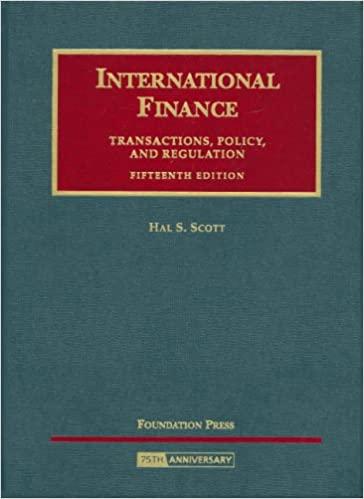Answered step by step
Verified Expert Solution
Question
1 Approved Answer
Eloise Moore was elated as she put down the phone. She had been talking with Bob Studz, vice president, data processing at Excelerite Integrated Systems
Eloise Moore was elated as she put down the phone. She had been talking with Bob Studz, vice president,
data processing at Excelerite Integrated Systems Inc. EIS who had just returned from a company
sponsored management development program in late August, Studz had said:
Eloise, we had a terrific session on capital budgeting last week. I can now see the utility of
projecting operating savings from the Pathrite system as a way of persuading Seattle to
provide us with the needed funds. Im developing tentative savings numbers and will
email them to you as soon as Im finished. Could you take a rough cut at the kind of
analysis that will make sense to the Seattle financial mavens?
Moore was a sales representative with Monster Computer Corporation MCC A year veteran, she was
assigned to large accounts, those whose purchases were expected to exceed $ million. Working from her
office in Phoenix, Arizona, Moore was assigned customers in the western half of the United States. MCC
was the largest provider of hardware and software in the data processing field and had recently expanded to
provide consulting and data processing services.
Moore saw a golden opportunity. Seattle was the home office for EIS and the source of all EIS corporate
capital funds. If she could help Studz sell the system to his top management, she would enhance her
standing among the sales staff. Moore sketched out the system that she and Studz had been discussing. It
included a supercomputer, data storage and a set of peripherals to allow corporate data to be accessed via
the Web and by mobile users in EIS district offices around the country. The total cost for the system was
$ million.
Because of the lead time for assembling components, delivery and payment could be in late so
Moore decided to use a January operating starting date. She anticipated that the expected marginal
tax rate for EIS would be per cent federal and state taxes and that the modified accelerated cost
recovery scheme for depreciation would be used for tax purposes see Exhibit
Usage permitted only within these parameters. This PDF may not be reproduced, stored in a retrieval system, or uploaded to any LLM eg ChatGPT
Taught by Sean Cleary, from Jun to Oct Order ref F
Purchased for use on the MFIN Corporate Finance and Financial Statement Analysis, at Smith School of Business, Queen's University.
case centre Distributed by The Case Centre All rights reserved e info@thecasecentre.org t or w wwwthecasecentre.org
Educational material supplied by The Case Centre
Copyright encoded AHMJUJKPJMNI
Page BN
Moor did not know the target capital structure of EIS or the hurdle rate used by Seattle ie the EIS home
office in evaluating their capital commitments. Accordingly, she decided to estimate them using publicly
available financial data see Exhibit She assumed that EIS management sought to maintain a mix of
per cent longterm debt and per cent common equity book value which was consistent with industry
averages. Furthermore, she knew that EIS management would be reluctant to sell shares at the depressed
market price of per cent of book value see Exhibit and that the average return on large company
stocks had exceeded the return on riskfree securities by per cent over a year period. She estimated
that inflation would average per cent each year for the foreseeable future.
A week or so after her conversation with Bob Studz, Moore received a memorandum from him indicating
the expected savings from the installation of the equipment see Exhibit She knew that EIS would
expect her analysis to be based on the application of discounted cash flow techniques to determine both a
net present value and an internal rate of return. Her next task would be to prepare an analysis for Studz,
based on the information available to her.
Usage permitted only within these parameters. This PDF may not be reproduced, stored in a retrieval system, or uploaded to any LLM eg ChatGPT
Taught by Sean Cleary, from Jun to Oct Order ref F
Purchased for use on the MFIN Corporate Finance and Financial Statement Analysis, at Smith School of Business, Queen's University.
Educational material supplied by The Case Centre
Copyright encoded AHMJUJKPJMNI
Page BN
Exhibit
MODIFIED ACCELERATED COST RECOVERY CALCULATION
Used by EIS for tax purposes
Total Investment $
Guideline life years
Halfyear life convention
Year Percent Dollar Amount
Note: EIS could take the full years depreciation under the halfyear convention without regard to the month the Pathrite
system was purchased.
Usage permitted only within thes
Step by Step Solution
There are 3 Steps involved in it
Step: 1

Get Instant Access to Expert-Tailored Solutions
See step-by-step solutions with expert insights and AI powered tools for academic success
Step: 2

Step: 3

Ace Your Homework with AI
Get the answers you need in no time with our AI-driven, step-by-step assistance
Get Started


